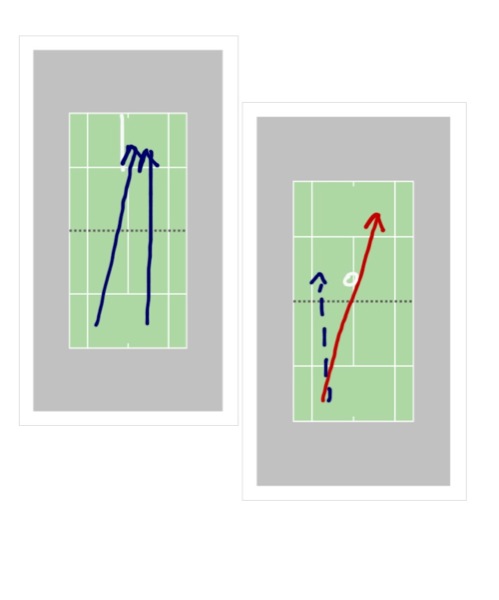 Do you struggle with your backhand? Are you the type of person who expends too much energy running around your weaker shot? Do you find yourself doing silly things with the rest of your game in order to avoid hitting a backhand? Are you motivated to improve your backhand so that it becomes rock-solid? If the answer to some or all of these questions is "yes", then here are some creative drills to help you along.
Do you struggle with your backhand? Are you the type of person who expends too much energy running around your weaker shot? Do you find yourself doing silly things with the rest of your game in order to avoid hitting a backhand? Are you motivated to improve your backhand so that it becomes rock-solid? If the answer to some or all of these questions is "yes", then here are some creative drills to help you along.
In the first drill (game up to 11, 15, 21, etc.), one player has to cover the whole court but must hit all his shots (including volleys) into the backhand half of the opponent's court (blue lines). The backhand player (i.e. the one covering only half of the court) can hit anywhere but, from the baseline, must only use his backhand. If the backhand, player is brought (or comes in) to the net, s/he can hit FH volleys. However, if the backhand player comes to the net (inside the service line), it's open court time (whole court may be used by the opponent). This is a great drill for one player to force himself to learn how to set up for the backhand and how to move it around without worrying about covering the other half of the court. The opponent, on the other hand, must learn how to make the backhand player move around so the his/her forehand (middle of the court) is exposed. In this eay, both players are working on something.
In the second drill, the whole court is used by both players, but one player can only hit his backhand (including BH volley) cross-court (red line) unless the opponent comes to the net (blue line). The player who is limited to a cross-court backhand can, however, hit inside-out or inside-in forehands. For the player who can do anything, this drill simulates playing against a steady player who doesn't take too many chances on his backhand. Whenever the ball comes to that side of the court, the steady player (i.e., the one limited to a cross-court BH) tends to keep things simple and sends the ball back cross-court. The opponent "knows" this (i.e., in the drill, knowledge is artificially injected into the equation) so s/he tries to construct the point accordingly. The player who is limited to a cross-court backhand knows that the opponent is aware of the limitation so s/he works on hitting more effective backhands over the low part of the net and into the long part of the court - cross-court. Like a well-fought boxing match, both players work towards creating an opening. Same as in the first drill, play points and then swap roles.